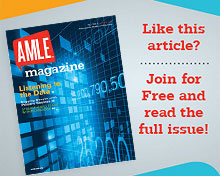For years, teachers have rightly complained that tests encourage them to focus on a narrow set of knowledge and skills rather than the broader set of abilities they know their students need. Now, however, the testing world is about to undergo the biggest transformation in a generation, and the result is likely to be higher-quality tests that measure what truly matters.
Last month, I noted that the Common Core State Standards (CCSS) in English language arts and mathematics have been adopted by 46 states and the District of Columbia. Over the past three years, two groups of states have been developing new assessments to measure student performance against those standards. The Partnership for Assessment of Readiness for College and Careers (PARCC), a group of 19 states, and the Smarter Balanced Assessment Consortium (SBAC), a group of 24 states, aim to have their new assessments in place in the 2014–2015 school year.
These new assessments will differ from the standardized tests teachers have come to know and dislike. For one thing, they will be delivered by computer, although paper versions will be available for schools that lack the equipment or bandwidth to administer the computerized versions. The use of technology will enable much quicker results.
In addition, the assessments will go beyond multiple-choice responses to allow for short and extended constructed responses as well as some performance tasks that give students the opportunity to complete in-depth projects to demonstrate their analytical and problem-solving abilities. Although teachers have said that testing takes up too much instructional time, these tasks will be the kinds of activities students should be doing.
As a result, the new assessments will measure a broader range of knowledge and skills than current tests. They will assess whether students have a deep understanding of core content and whether they can use their knowledge to think critically, solve problems, and communicate effectively. That is, these assessments will measure the kinds of deeper learning teachers want their students to develop, and that they want to teach.
Don’t take my word for it; two of the nation’s leading assessment researchers, Joan Herman and Robert Linn, looked at the designs and sample items of PARCC and SBAC and found that the depth of knowledge they will tap is substantially higher than what current tests measure. They note that the tests are not yet in place, but they are moving in the right direction.
Of course, states face substantial challenges in implementing these new assessments. They will cost more than many states currently pay for testing, although the information they get from them will be much richer and more valuable to teachers than current tests provide.
Teachers and their allies must make the case for new and better assessments. The Alliance for Excellent Education held a series of events on December 3, when the results from the Programme for International Student Assessment (PISA) came out. PISA is a test of reading literacy, mathematics, and science given every three years to 15-year-olds in the United States and more than 70 countries worldwide by the Organisation for Economic Co-operation and Development.
PISA was not designed to measure students’ mastery of a school curriculum but, rather, to evaluate what students can do with the information they have learned—in other words, the kinds of abilities students ought to demonstrate and tests ought to measure.
With the adoption of the new assessments, the hope is that the next round of PISA results will show even higher levels of learning for U.S. students.
Bob Wise is president of the Alliance for Excellent Education, Washington, D.C. alliance@all4ed.org
Published in AMLE Magazine, January 2014.
